#museo del prado
Explore tagged Tumblr posts
Text
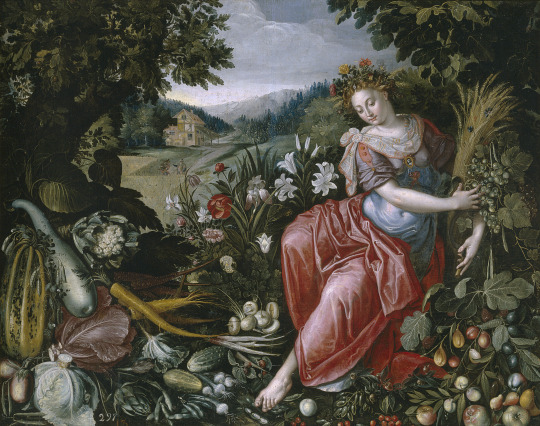
The Earth, Maerten de Vos (1532-1603)
#Earth Day#art#art history#Maerten de Vos#allegory#allegorical art#Baroque#Baroque art#Flemish Baroque#Flemish art#16th century art#oil on canvas#Prado#Prado Museum#Museo del Prado
1K notes
·
View notes
Text

Caravaggio at the Prado Museum, Madrid.
480 notes
·
View notes
Text

Offering to Ceres by Jacob Jordaens
Flemish, c. 1620
oil on canvas
Museo del Prado
#Ceres#goddess#offering#mythology#cornucopia#Jacob Jordaens#baroque#art history#art#painting#Flemish#Prado#Museo del Prado
190 notes
·
View notes
Text

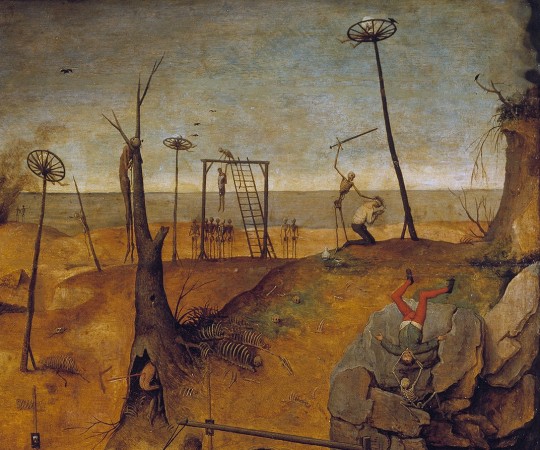
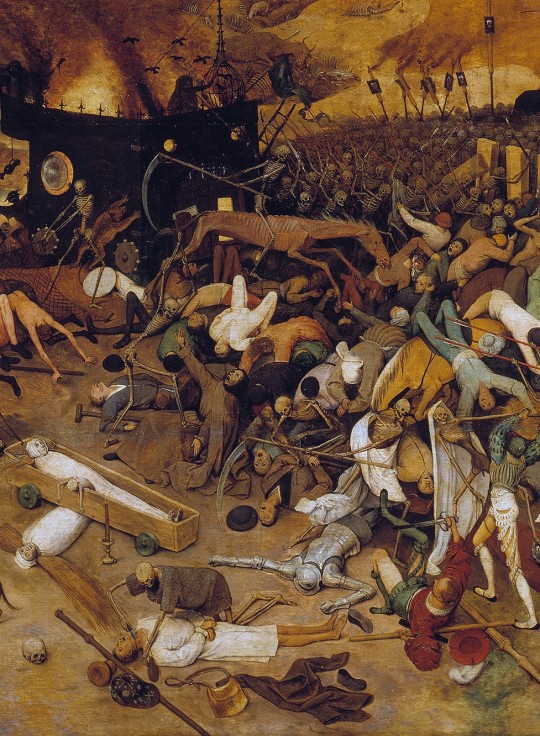

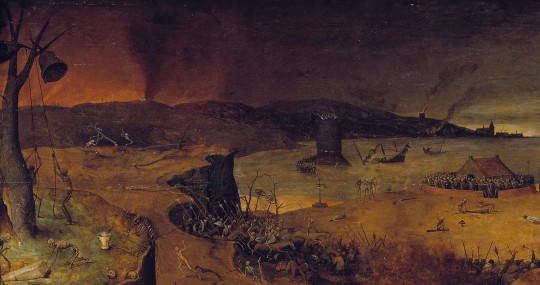
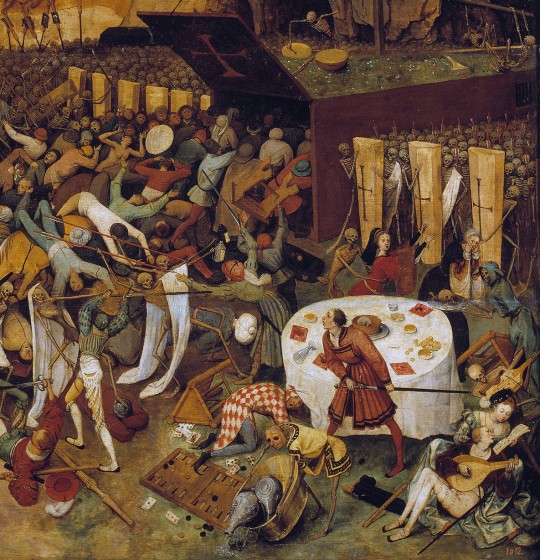
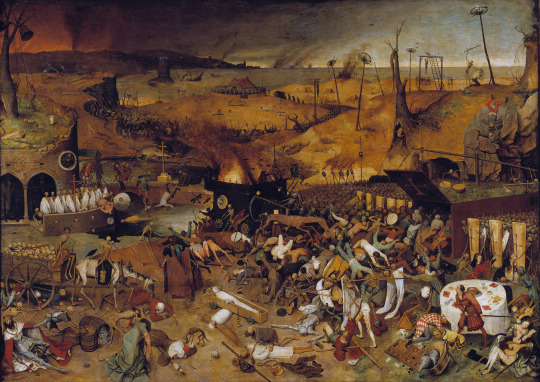
#art#painting#oil on panel#museo del prado#pieter bruegel the elder#the triumph of death 1562#netherlandish art#dance of death#ein totentanz#danse macabre#allegory of death
414 notes
·
View notes
Text
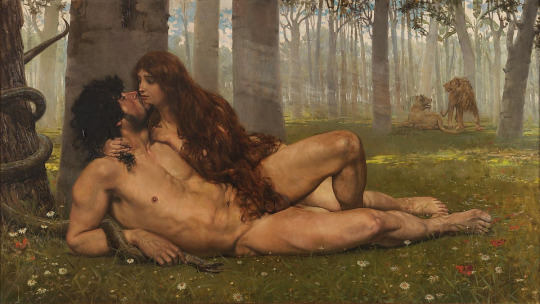
Salvador Viniegra (1862-1915) "The First kiss of Adam and Eve" (1891) Located in the Museo Del Prado, Madrid, Spain
#paintings#art#artwork#religious painting#adam and eve#salvador viniegra#fine art#museo del prado#museum#art gallery#spanish artist#male figure#portrait of a man#portrait of a woman#long red hair#lions#snake#trees#first kiss#1890s#late 1800s#late 19th century#1k
2K notes
·
View notes
Text
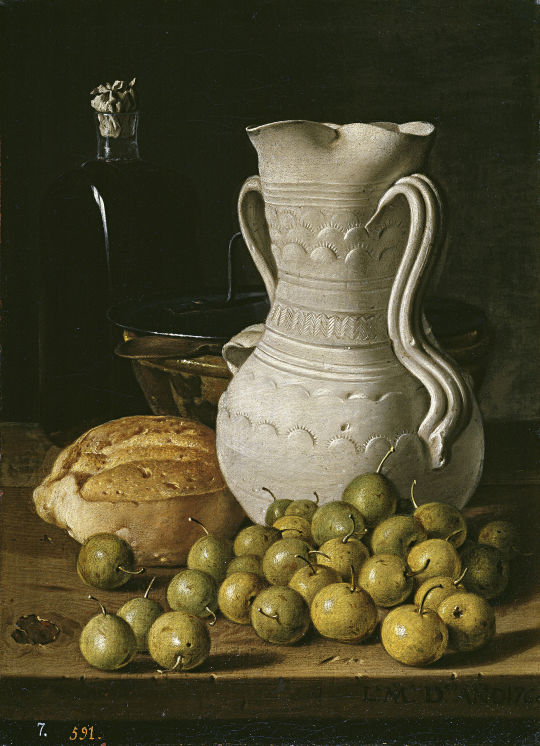
Luis Egidio Meléndez (Spanish, 1716–1780) • Still Life with Green Olives and Jar • 1760 • Museo del Prado, Madrid
#art#painting#fine art#art history#luis egidio meléndez#spanish artist#still life#still life artist#oil painting#museo del prado#18th century european art#art of the still life blog
155 notes
·
View notes
Text

Miguel Blay y Fábrega
Eclosión, 1905
336 notes
·
View notes
Text

Diana the Huntress
Artist:Juan Bautista Martínez del Mazo (Spanish, c.1612-1667) (Copy after: Peter Paul Rubens)
Date: 17th century
Medium: Oil on canvas
Collection: Museo Nacional del Prado, Madrid, Spain
Description
Diana the Huntress is the Roman goddess of hunting and the wild animals, and is often depicted in art and literature. She is also associated with the moon, fertility, and childbirth
#mythological painting#oil on canvas#diana the huntress#roman goddess#roman mythology#fine art#landscape#female figure#dogs#trees#nude figure#spanish culture#juan bautista martinez del mazo#spanish painter#oil painting#museo del prado#spanish art#17th century painting#artwork#european art#baroque style
29 notes
·
View notes
Text




Justice and peace, Corrado Giaquinto, 1753-54
#museo del prado#justice#peace#allegory#corrado giaquinto#18th century#art history#art#aesthethic#italian art#painting#lesbian art#homoerotic art
95 notes
·
View notes
Text

Noli Me Tangere
Artist: Correggio (Antonio Allegri) Italian, 1489-1534
Genre: Religious Art
Date: c. 1525
Medium: Oil on Canvas
Collection: Museo del Prado, Madrid, Spain
Description
The scene is taken from events narrated near the end of the Gospel of John, in which Mary Magdalene returns to Jesus' tomb after having found the body missing. There, in her sorrow, she is greeted by two angels and then by Christ himself.
"And as she wept, she stooped down, and looked into the sepulchre, and seeth two angels in white sitting, the one at the head, and the other at the feet, where the body of Jesus had lain. And they say unto her, Woman, why weepest thou? She saith unto them. Because they have taken away my Lord, and I know not where they have laid him. And when she had thus said, she turned herself back, and saw Jesus standing, and knew not that it was Jesus. Jesus saith unto her, Woman, why weepest thou? whom seekest thou? She, supposing him to be the gardener, saith unto him, Sir, if thou have borne him hence, tell me where thou hast laid him, and I will take him away. Jesus saith unto her, Mary. She turned herself, and saith unto him, Rabboni; which is to say, Master. Jesus saith unto her, Touch me not; for I am not yet ascended to my Father: but go to my brethren, and say unto them, I ascend unto my Father, and your Father; and to my God, and your God." ~ John 20:11–17 KJV
#religious art#correggio#italian painter#book of john#bible scripture#new testament#jesus christ#mary magdalene#landscape#christianity#christian#the bible#16th century art#christian art#museo del prado
62 notes
·
View notes
Text

Roman Athletes, Aniello Falcone, ca. 1640
#art#art history#Aniello Falcone#historical painting#ancient history#Ancient Rome#Baroque#Baroque art#Italian Baroque#Italian art#17th century art#oil on canvas#Prado#Prado Museum#Museo del Prado
447 notes
·
View notes
Text

Los Zancos (The Stilts)
Artist: Francisco Goya y Lucientes (Spanish, 1746–1828)
Date: 1791-1792
Medium: Oil on canvas
Collection: Museo del Prado, Madrid, Spain
Description
Two young men on high stilts head toward a window out of which a young woman leans. They are accompanied by two other young men on foot, playing the dulzaina. Groups of men wrapped in their capes and with broad-brimmed hats completely covering their faces, as well as women and children, contemplate the festive scene. As in many other works from this period, a simple, everyday subject contrasts with a deeper theme. Here, the stiltwalkers' effort to avoid falling and their gallantry with the lady in the window are a means of denouncing the struggle to survive that period's difficult social conditions. This cartoon was for one of the tapestries intended for Carlos IV's office at El Escorial .
#painting#oil on canvas#genre art#men#women#young men#music#capes#broad brimmed hats#children#festive scene#stilts#francisco goya y lucientes#spanish painter#fine art#building#window#horizon#spanish art#spanish culture#18th century painting#artwork#european art#museo del prado
21 notes
·
View notes
Text
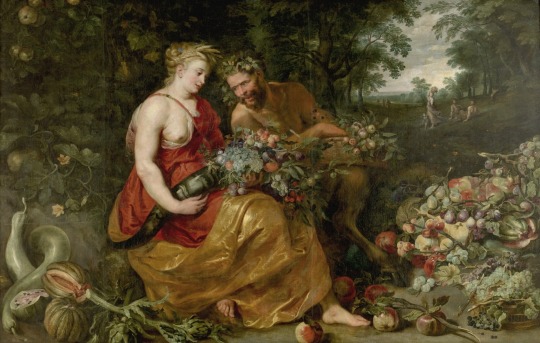
Ceres and Pan, attributed to the workshop of Peter Paul Rubens and Frans Synders
Flemish, c. 1620
oil on canvas
Museo del Prado
#Ceres#Pan#goddess#god#mythology#Peter Paul Rubens#Frans Synders#Flemish#baroque#art#painting#cornucopia#Museo del Prado#Prado
71 notes
·
View notes
Text

Allegory of Peace and Justice
Artist: Corrado Giaquinto (Italian, 1703-1766)
Date: 1753-1754
Medium: Oil on canvas
Collection: Museo Nacional del Prado, Madrid, Spain
Description
This allegorical work, signed on the column lying on the ground in the center of the composition, shows two women in Roman garb sitting on clouds. Representing Justice and Peace, they embrace and seem about to kiss each other. This pictorial motif could be used to express political peace or, as is the case here, to allude to the peaceful policies that characterized the reign of Ferdinand VI , for whom this work was painted. It also relates to Psalm 85, which announces eternal peace between God and humankind, or salvation, implying the warning that peace should be consolidated on earth as well: Mercy and truth are met together; righteousness and peace have kissed each other. Truth shall spring out of the earth; and righteousness shall look down from heaven. Yea, the Lord shall give that which is good; and our land shall yield her increase. Righteousness shall go before him; and shall set us in the way of his steps.
Justice manifests his great authority with a crown and sceptre. She is also inspired by Divine Justice, symbolized by the white dove of the Holy Ghost . The customary attributes alluding to Justice's most essential characteristics are also present, including the ostrich, whose symmetrical feathers signify fairness, and a fasces and a column, which symbolize severity and fortitude, at her feet. Her sword evokes the separation of good from evil, an act also associated with the scales lying on the ground. The prone figure surrounded by pieces of armor represents discord or war, which has been dutifully vanquished by Justice. It is also the target of one of Cupid's arrows, which is stored in a box and symbolizes reconciliation. The god of love is accompanied by two other cherubs who operate a bellows in front of the Temple of Peace , fanning the flames that will be used to burn the armor.
Peace bears an olive branch, transmitting the idea that it is the result of Justice, which leads to the well-being symbolized by a horn of plenty at her feet, and by the wheat and fruit on the tree to the right being harvested by cherubs. The lion and the lamb, symbolizing meekness and strength, also allude to God's coming as announced by the Psalm 85. Specifically, these animals refer to the characterisations of Christ as the Lion of Judea and the Lamb of God that appear at the beginning of the Book of the Seven Seals that marks the beginning of the Last Judgment and the establishment of Paradise . With this combination of secular allegory and religious references, Giaquinto sought to ennoble the reign of Ferdinand VI by comparing it to the Kingdom of God .
#allegory of justice and peace#allegorical art#allegory#painting#oil on canvas#fine art#allegorical painting#women#roman garb#cloud#crown#spectre#white dove#landscape#cupid#chrubs#clouds#symbolism#architecture#corrado giaquinto#italian painter#italian culture#museo del prado#18th century painting#artwork#european art#italian art#temple of peace#fire
21 notes
·
View notes
Text
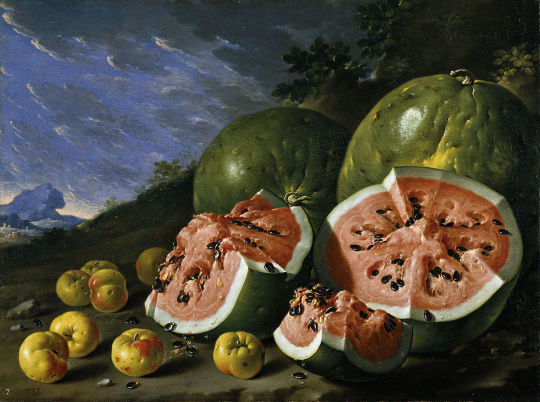
Luis Egidio Meléndez (1716-1780) "Still life with watermelons and apples in a landscape" Oil on canvas Located in the Museo del Prado, Madrid, Spain
#paintings#art#still life painting#fruit#artwork#luis egidio meléndez#luis egidio melendez#oil on canvas#fine art#museo del prado#museum#art gallery#spanish artist#fruits#apples#watermelon#landscape#1700s#18th century
374 notes
·
View notes
Text


Portrait of Mariana of Austria Diego Velázquez 1652–1653 Oil on canvas 234.2 cm × 131.5 cm Museo del Prado (on loan at Norton Simon Museum)
Saint Cecilia Guido Reni 1606 Oil on canvas 95.9 x 74.9 cm Norton Simon Museum
#art history#art#portrait of mariana of austria#diego velazquez#oil on canvas#painting#museo del prado#norton simon museum#saint cecilia#guido reni
20 notes
·
View notes